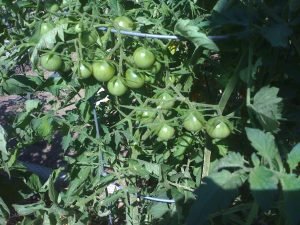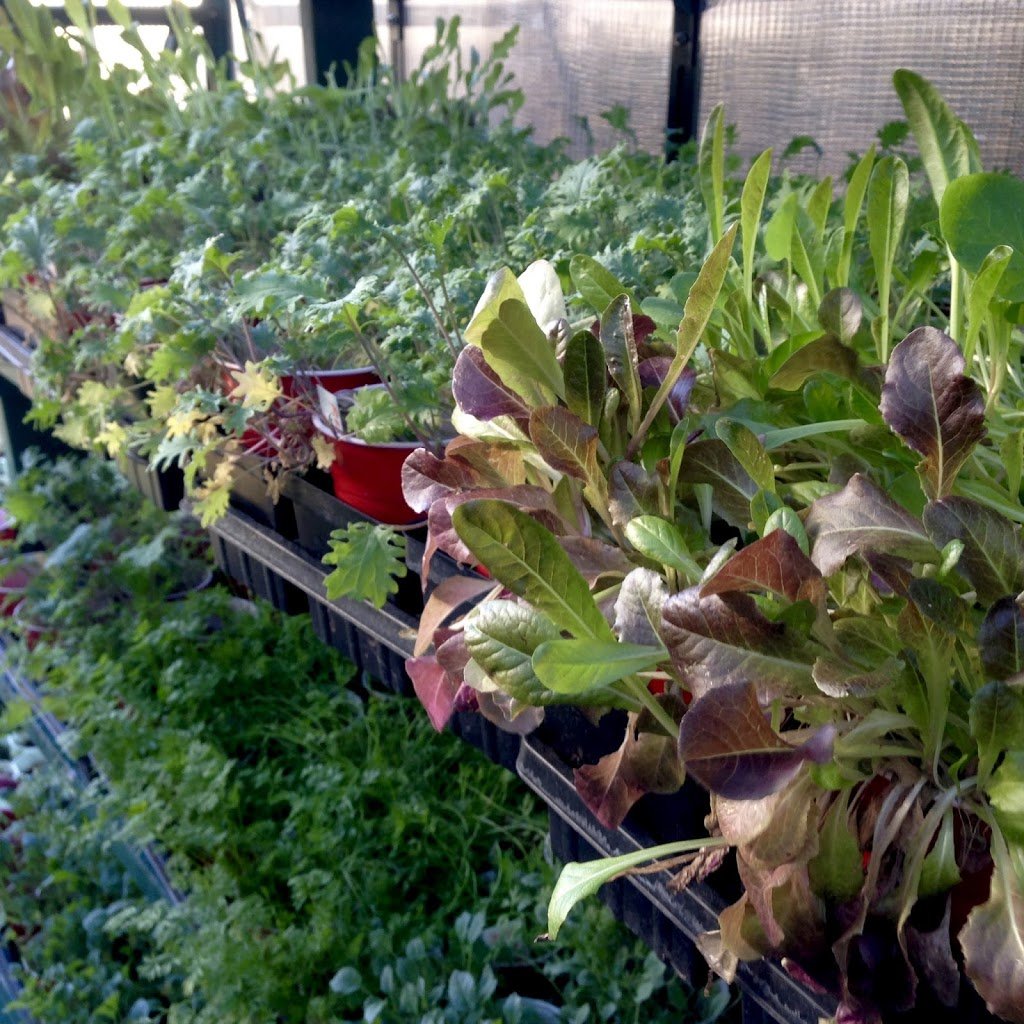
Gardening Myth #1: Tomatoes like it hot…
October 4, 2016Does this sound familiar to anyone… It’s the middle of July along the front range. You have the most beautiful, six foot tall tomato plant and there’s not a single tomato on it. You scour every square inch of your plant looking for a hidden fruit or two. Nada. Niente. Nothing. Not even one stinking, rotten, flower. Not one. A little depression creeps in and you chalk it up to a bad year for tomatoes and hope next year will be better. Maybe, you even swear off growing tomatoes entirely. After all, what’s the point of growing a tomato-less tomato plant?
 |
| Clusters of Black Cherry Tomatoes |
Then August rolls around. Suddenly, your plant explodes with blossoms. By the third or fourth week overgrown foliage covers dozens and dozens of nickel and quarter sized fruits. Now it becomes a race against time as October looms large, and with it, the usual first killing frost. What gives?
The answer may lie in the summer heat. The most commonly held belief among gardeners is that tomatoes need the sunniest spot in your yard. The tag inside the pot even reinforces the belief by stating that you should plant in full or all day sun. What the tag fails to mention is that… when temperatures reach around 90 degrees for any length of time, typically late June and the entirety of July, a tomato vine may stop flowering. Add into the mix Colorado’s notorious dry spells, like this past July, and you can easily find yourself staring at a barren, six foot Heirloom tomato plant.
Now for some good news. There are solutions. And by solutions I mean plural.
| Mortgage Lifters |
Solution #1 Mulch, mulch, mulch and mulch. Did I forget to mention mulch?
Here are a few benefits to mulching your plants:
1: Reduces erosion.
2: Helps soil retain moisture.
3: Aids in preventing soil-born diseases splashing on the plant.
4: Adds nutrients to the soil as it decomposes and, most importantly…
5: Lowers and maintains soil temperature! The name of the game is reducing the plant’s temperature to keep it flowering. A few readily available mulches are: grass clippings, leaves, wood chips and straw. Try and stay away from artificially colored barks though, and all the chemicals they contain.
 |
| Beautiful Black Krims ripening |
Solution #2 Avoid planting around heat reservoirs.
A heat reservoir is anything that can store and/or radiate heat onto the plant. That sunny spot alongside your South facing brick wall? Yeah, that’s a heat reservoir. The plant itself loves the warmth, may even grow as tall as your house’s gutter. But we’re not in the business of growing the tallest plants, we want tomatoes. Sidewalks, driveways, rock gardens, reflective surfaces, patios, brick anything… these all serve as heat reservoirs. And they may be the reason your plants aren’t flowering.
Solution #3 Plant your tomatoes in morning sun
Remember, our Mile High altitude means stronger sun intensity. The extremely hot afternoon sun can enable plants from flowering. I have successfully grown beautiful, productive, 6 foot tall plants in as little as four hours of morning sun. If morning sun isn’t an option try growing your plants in part shade or perhaps constructing something give them the required shade during the extreme parts of Summer. Every little bit helps.
Solution #4 Don’t be afraid to give your plants a cool shower.
A word of caution though. Heirloom tomato plants, in most cases, are not as disease resistant as hybrid varieties. If you plan to spray down your plants on a regular basis consider pruning them to allow for good airflow through the plant. This will help to avoid prolonged moisture on the leaves and stem. Colorado’s low humidity is a plus in this area. Take note that fungus and disease problems generally begin as moisture problems. Dry plants are relatively healthy plants!
Who would’ve thought growing tomatoes would be this much work? Anyone who’s ever gardened along Colorado’s front range, that’s who.



I’m going to read this. I’ll be sure to come back. thanks for sharing. and also This article gives the light in which we can observe the reality. this is very nice one and gives indepth information. thanks for this nice article… Gardening Tips
It is often said that nothing can set the atmosphere of a garden faster a tree, and that goes for small gardens too. Small garden tips
A couple of these stores are Home Depot, Lowes, and Ace Hardware. Be that as it may, you ought to never expel superstores like Walmart and Target.https://howdoesyourgardenmow.com/chicago-electric-chainsaw/